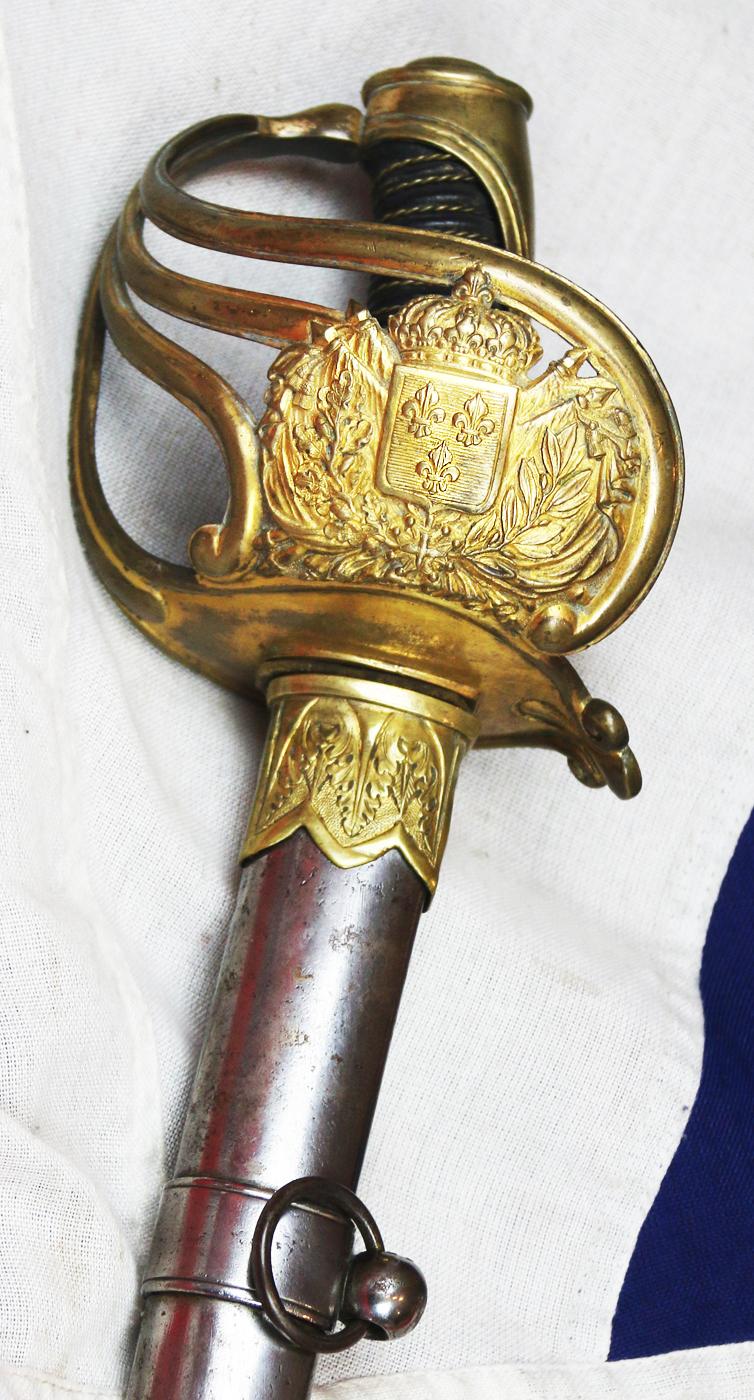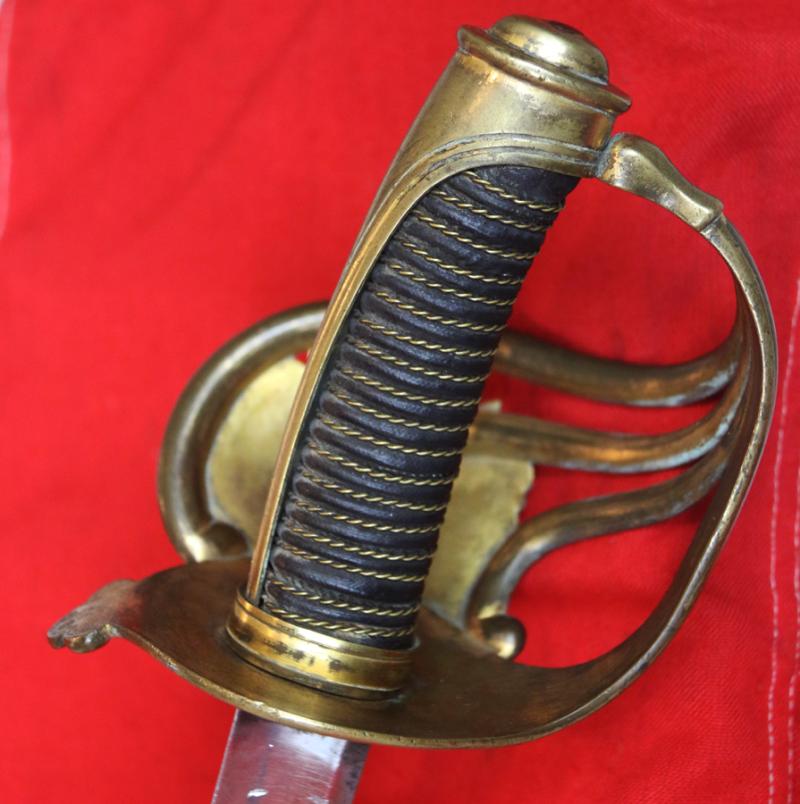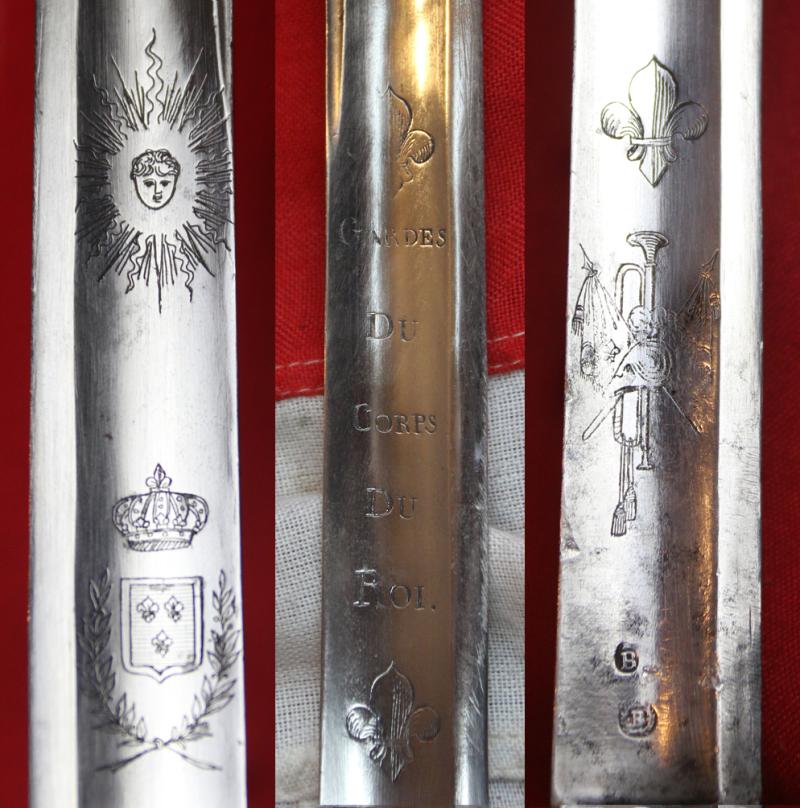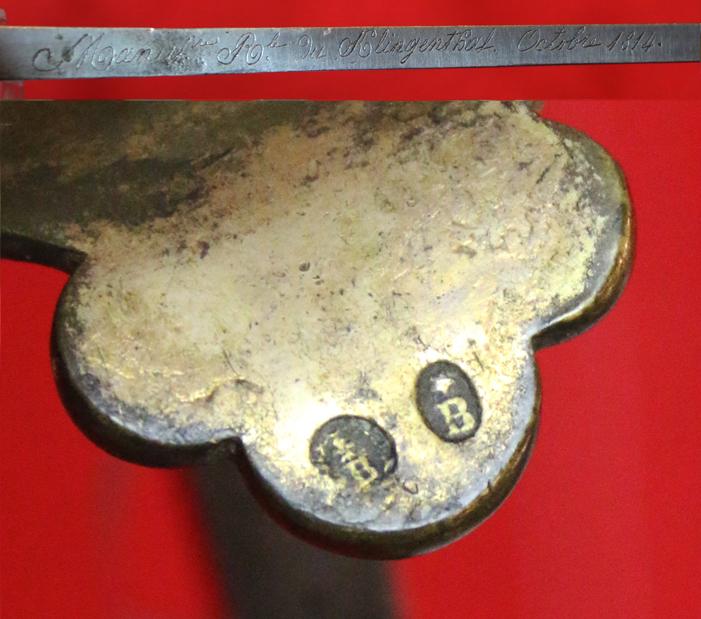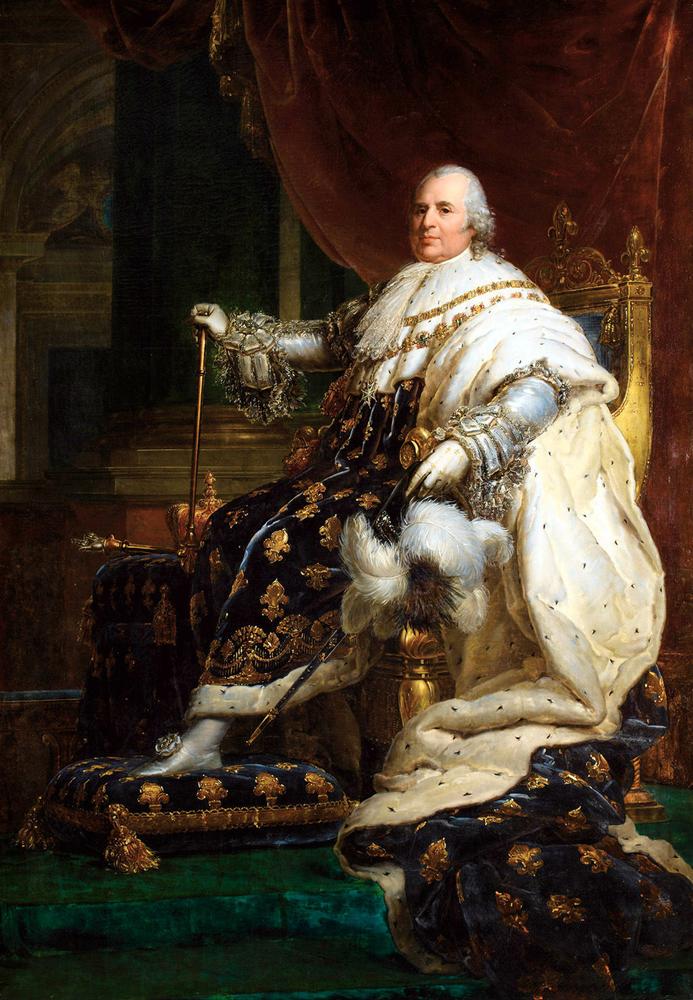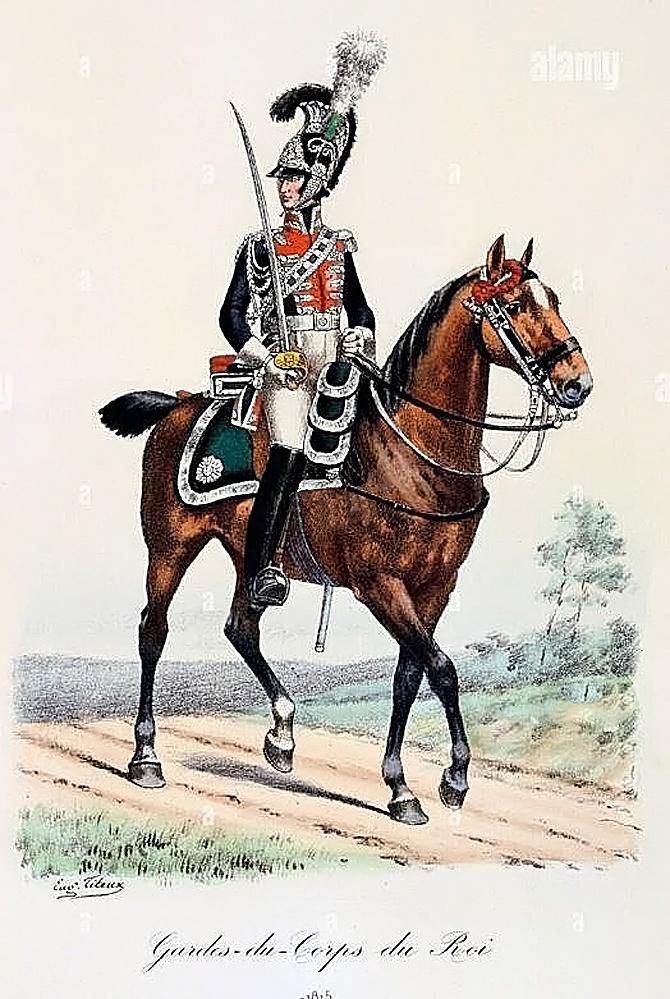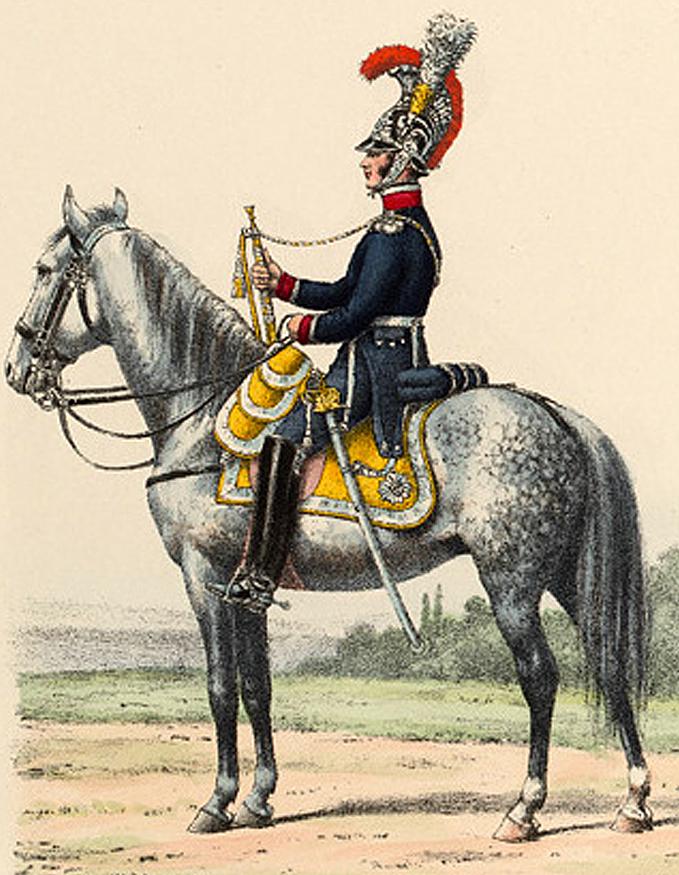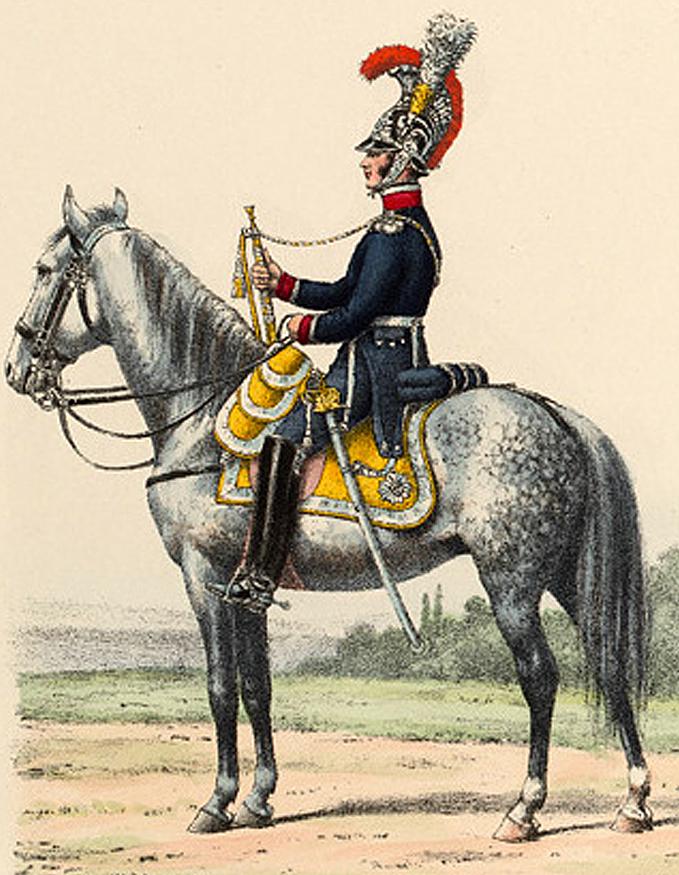A Simply Magnificent Napoleonic Wars Period Sword Dated 1814, Of the Personal Bodyguard of King Louis XVIIIth The Gardes-Du-Corps Du Roi Made After Napoleon's Defeat in 1814, & His Exile to Elba, Before Battle of Waterloo
Easily worthy of the Napoleonic collection in Musee de l'Armée, Les Invalides, in Paris, France. One of the most beautiful French swords ever made during the Napoleonic wars, in fact, likely before and certainly since. A very fine and rare example with much original mercurial gilt, with slightly-curved blade engraved with fleurs-de-lys and title GARDES DU CORPS DU ROI etc., Engraved blade, Manufre. Rle De Klingenthal Octobre 1814, four-bar gilt-brass guard incorporating Bourbon crown and shield, steel and gilt bronze mounted combat scabbard, the blade and guard each also bearing two stamps. The stamps are those of Louis Borson (inspector 1814-16) and Jean-Georges Bick (controller 1812-15)
With slightly curved fullered blade double-edged towards the point, the forte stamped with two inspector's marks on one side and etched 'Gardes Du Corps Du Roi.' between fleur-de-lys above a martial trophy, and on the other with a sun-in-splendour above the arms of France and a further martial trophy, the flat back etched 'Manuf. Rle. de Klingenthal October 1814', gilt-brass hilt stamped with inspector's marks on the hilt, cast and chased with the crowned arms of France against banners and crossed sprigs of laurel and oak, incorporating three rounded bars swept up to join the knuckle-guard, and with pommel-cap and slightly bowed back-strap in one, ribbed fishskin-covered grip bound with twisted brass wire, and most original gilding, in its steel scabbard with gilt-brass lock cast and chased with foliage on each side, and two suspension rings
Following the First Restoration of 1814, the Bourbon Monarchy attempted to recreate the Maison militaire du Roi, even re-establishing the mostly-ceremonial units that Louis XVI had disbanded in 1787. In part, this was to provide military roles for emigre royalist officers who had returned to France or their sons. However, there was not sufficient time to raise a new Swiss Guard before Napoleon's return from Elba in March 1815, although the future Charles X acknowledged that the regiment's past services warranted this being done. The Maison militaire accompanied the flight of Louis XVIII to Belgium but only 450 men remained with him to cross the frontier. After the Second Restoration, no serious attempt was made to again restore the Maison militaire du Roi and it was (with the exception of a re-organised Body Guard) replaced with an entirely new Royal Guard of division size, which lasted till 1830.
On July 24, 1815 Louis XVIII issued an ordinance that named specific individuals that were to be arrested immediately and held for trial for their actions during the Hundred Days. Meanwhile royalists throughout the country acted with impunity against prominent supporters of the French Revolution and Napoleon in what became known as the White Terror. (White was the official color of the royalists in contrast to the tricolor of Revolutionary and Imperial France).
With the exception of Tsar Alexander personally intervening to protect Caulaincourt, the Allied powers did nothing to protect their former military adversaries from royalist persecution. The Duke of Wellington was frequently criticized for not intervening in the farce that was the trial of Marshal Ney. The Allied powers stated that they did not want to intervene in internal French politics, ignoring the fact that they had just forced a regime change through military force and had installed Louis XVIII on the throne over the wishes of many of the French people.
Generals killed in retaliation for supporting Napoleon's return
Two of Napoleon's marshals and six of his generals were killed in acts of vengeance during the White Terror. Ironically, the two who were assassinated by mobs, Brune and Ramel, could hardly be called Bonapartists. Brune was out of favour with Napoleon for years and Ramel had been exiled for being a royalist in 1797 during the coup of 18 Fructidor. Three executions were carried out on those included in Article 1 of the ordinance, namely Ney, de la Bédoyère, and Mouton-Duvernet. De la Bédoyère was executed almost immediately while Ney went through a public and controversial trial in the Chamber of Peers. Mouton-Duvernet went into hiding, only to reveal himself in 1816 and discover that the authorities still wanted vengeance. Not included in the ordinance and exempt from retaliation by Article 4, the twin Faucher brothers and General Chartrand were executed regardless.
Other generals assassinated or executed including;
1815-08-15: General Ramel who was assassinated at Toulouse.
1815-08-19: General La Bédoyère was executed by firing squad at Grenelle.
1815-09-27: Twin brothers Generals César Faucher and Contanstin Faucher were executed by firing squad at Bordeaux.
1815-12-07: Marshal Ney was executed by firing squad at Paris.
1816-05-22: General Chartrand was executed by firing squad at Lille.
1816-07-26: General Mouton-Duvernet was executed by firing squad at Lyon.
35.5 inch. blade
Code: 24457
6750.00 GBP


